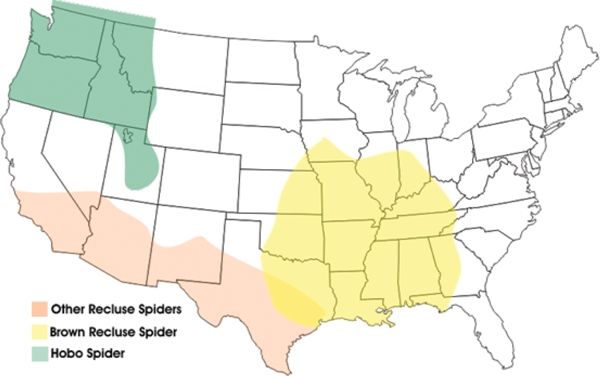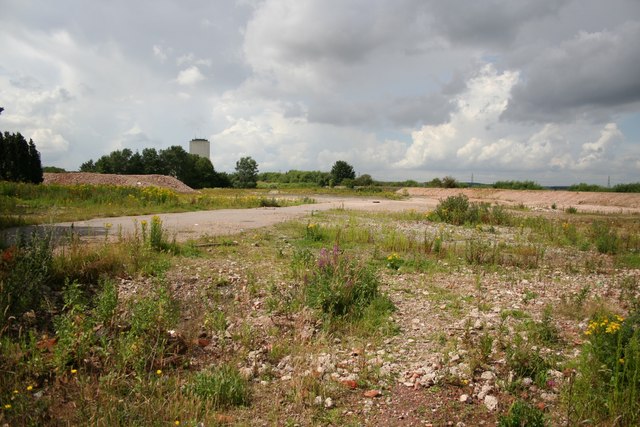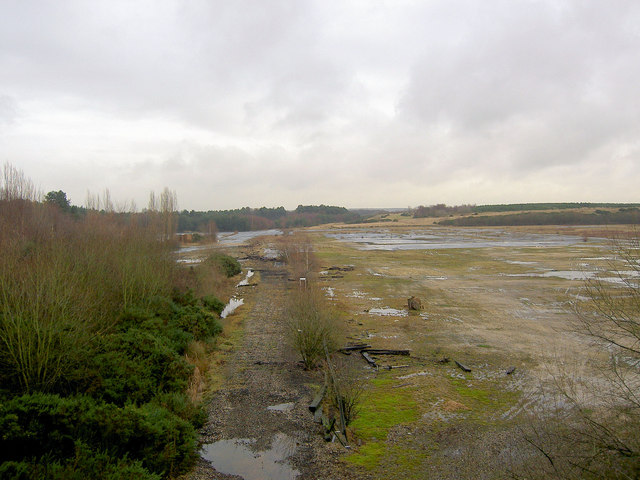Home of the Hobo
The hobo spider is originally from Europe and parts of Asia. It was first discovered in the United States in the 1930s in the pacific northwest. It is believed that the hobo spider spread from Europe to the United States via ships that were carrying the spider eggs.
In Europe, Tegenaria agrestis is often found in areas called a brownfield site. Brownfield sites are
locations that were once
occupied by humans and then abandoned. Some examples would be
houses and airplane runways. The hobo spider is often found in
and under the rubble of these different sites in Europe. Other
areas that T agrestis is found are rock quarries, fields, rich
grasslands, and wooded regions. Humans hardly ever come into
contact with hobo spiders because of its competition with Tegenaria
gigantean, also known as the giant house spider. These spiders
are found in homes and other places that people occupy in Europe,
so the hobo spider stays away from these areas to lower competition.
It is fulfilling its ecological niche by living in a place that is
different than its competitor.
Click
here to learn more about hobo spider populations in Europe.
Unlike the hobo spiders found in Europe, the ones in the United
States are found in the same areas as humans. T agrestis can
be found living in urban areas and also areas that are used
primarily for farming. Some specific spots are under rock
piles, around house foundations, and under piles of wood. The hobo
spider in the
 United States doesn’t have to deal with a competitor
like the hobo spider in Europe. Not having this
competition allows the spider to practically spread all over where
it can survive. T agrestis is fully capable of
adapting to new environments like it has shown when it moved from
Europe to the United States. The hobo spider doesn’t do well
in dry climates, so Utah is about as south as it can live in the
United States. It could potentially live all the way from
coast to coast in the north because of the cooler
climate and moisture. The hobo spider is seen as far north as
Canada, specifically British Columbia and Alberta.
United States doesn’t have to deal with a competitor
like the hobo spider in Europe. Not having this
competition allows the spider to practically spread all over where
it can survive. T agrestis is fully capable of
adapting to new environments like it has shown when it moved from
Europe to the United States. The hobo spider doesn’t do well
in dry climates, so Utah is about as south as it can live in the
United States. It could potentially live all the way from
coast to coast in the north because of the cooler
climate and moisture. The hobo spider is seen as far north as
Canada, specifically British Columbia and Alberta.

The hobo spider is usually found from the late winter months to
the late summer months. The male spiders are most active in
August and early September when they are looking for mates. If
a spider is found in the winter months, it is most likely going to
be a female.
Adaptations
Home


